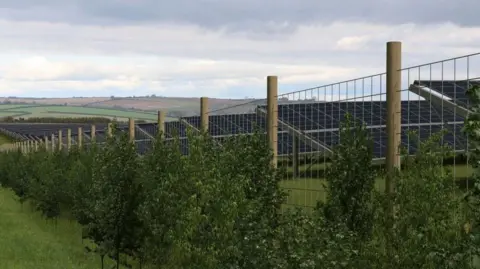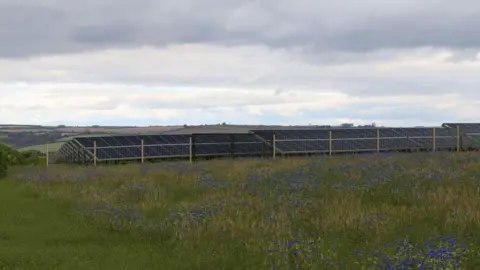Second attempt to build solar farm on protected site
 LDRS
LDRSA second attempt has been made to build a solar farm on an area of protected land.
Dorset councillors had previously rejected the use of the Cruxton Farm site near Maiden Newton, which was then upheld by a planning appeal.
But Enviromena, the company behind the scheme, has now submitted pre-application papers to Dorset Council, dealing with the need for an Environmental Impact Assessment for the site.
The papers confirm a new application, substantially the same as before, will be submitted later.
 LDRS
LDRSThe solar farm would have the capacity to produce enough electricity for more than 4,700 homes.
It was rejected partly because of concerns it would dominate the landscape and have a negative effect on a section of the 200-mile (321.9km) long national Macmillan Trail, adjacent to where the farm was planned.
But Enviromena said most local people, including Maiden Newton parish council, had supported the plan.
 LDRS
LDRSPlanning officers, campaigners and Natural England all argued the scheme would harm the National Landscape site, previously called an Area of Outstanding Natural Beauty.
They also said developers had failed to make a case for why they could not build in a less damaging area.
Enviromena said they believed extra planting and other landscaping on the 43-acre (17.6 hectares) site, which is on high ground, would mask the panels and result in a net gain for biodiversity in the area.
A spokesperson said they had a "clear commitment to leave places we touch in a better condition than when we arrived", and that any harm would be outweighed by the benefits.
The new papers submitted said the panels would be no more than 8.5ft (2.6m) tall with a perimeter fence limited to 7.2ft (2.2m), and with no closed circuit cameras planned.
You can follow BBC Dorset on Facebook, X (Twitter), or Instagram.
